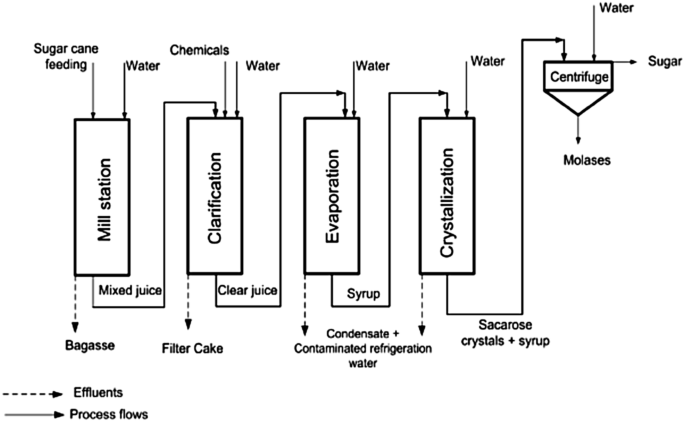Reliable Cane Sugar Processing Chemicals: Enhance Yield and Quality
Reliable Cane Sugar Processing Chemicals: Enhance Yield and Quality
Blog Article
Maximizar Rendimientos Y Minimizar Costos: Estrategias Avanzadas Para La Optimización Química Del Procesamiento De Azúcar De Caña
In the realm of walking cane sugar handling, the quest of making the most of returns while simultaneously decreasing expenses stands as an awesome difficulty that calls for a calculated blend of innovative chemical optimization techniques. The intricacies of this undertaking delve into the core of efficiency, where every aspect of the process plays a critical role in achieving ideal results. By discovering the intricacies of chemical analysis, enzyme application, pH control, filtration, and distillation methods, a landscape rich with chances for improvement and development emerges. In the middle of this intricate web of techniques lies the pledge of unlocking untapped capacity and revolutionizing the really essence of sugar manufacturing. Cane Sugar Processing Chemicals.
Chemical Analysis for Effectiveness
Chemical analysis plays an essential role in boosting the performance of sugar cane processing by giving crucial understandings right into the composition and residential or commercial properties of the raw products. By conducting in-depth chemical analyses on sugar cane samples, processors can figure out the exact focus of sucrose, glucose, fructose, and various other components present in the raw material. This information is crucial for optimizing the numerous phases of the sugar walking cane processing chain, from crushing to crystallization.
Moreover, chemical evaluation allows processors to determine impurities such as natural acids, healthy proteins, and minerals that can impact the high quality and return of the final sugar product. By evaluating these pollutants, processors can implement targeted methods to get rid of or alleviate their results, eventually improving the general efficiency of the processing plant.
Additionally, chemical evaluation facilitates the surveillance of procedure specifications such as pH, temperature level, and thickness, allowing cpus to make real-time changes to make certain optimum conditions for sugar removal and condensation. On the whole, a thorough understanding of the chemical composition of sugar walking cane is essential for making the most of yields, reducing prices, and keeping high product top quality in the sugar production sector.

Enzyme Use for Raised Returns
With a calculated method to enzyme usage, sugar walking cane processors can considerably enhance their yields while maintaining operational efficiency in the production process. Enzymes play a vital role in sugar walking cane handling by damaging down complicated carbs into simpler sugars, thus boosting the general sugar removal performance. By incorporating specific enzymes customized to target the different components of sugar walking cane, such as cellulose and hemicellulose, cpus can improve the launch of sugars throughout removal.
Enzyme utilization uses the advantage of making best use of sugar yields from the raw product while lessening the power and resources required for handling. With mindful choice and application of enzymes, sugar cane processors can optimize their procedures to achieve greater returns and productivity.
Ph Control for Optimal Handling
Enzyme utilization for increased yields in sugar cane processing lays the structure for dealing with the essential facet of pH control for optimal handling performance. Maintaining the appropriate pH level throughout various stages of sugar cane processing is necessary for optimizing yields and minimizing expenses. pH control is particularly essential during the removal and information procedures. In the removal stage, preserving the correct pH assists in achieving efficient sucrose extraction from the walking stick. Regulating the pH during explanation aids in the precipitation of pollutants and non-sucrose elements, resulting in a purer last item. Moreover, pH affects the activity of enzymes included in the break down of macromolecules, influencing the total efficiency of the process. By carefully keeping an eye on and changing the pH levels at various handling actions, sugar walking stick cpus can enhance sugar recuperation rates, minimize chemical use, and maximize the general production process. Reliable pH control not just boosts the top quality of the final item yet also adds to lasting and cost-efficient sugar walking cane processing procedures.
Advanced Purification Methods
Carrying out innovative filtration methods in sugar walking stick processing enhances the efficiency and pureness of the end product with improved splitting up techniques. By incorporating advanced filtration technologies, such as membrane purification and turned on carbon filtration, sugar walking stick handling plants can attain greater degrees of sugar recovery and enhanced quality assurance.

Activated carbon filtration is one more advanced technique that check these guys out assists in the removal of colorants, off-flavors, and residual pollutants from sugar cane products. By utilizing turned on carbon's adsorption homes, this purification approach enhances the clearness and taste of the sugar, satisfying the high requirements demanded by customers and industry guidelines.
Energy-Efficient Distillation Techniques
Energy-efficient purification approaches are necessary for maximizing the sugar walking stick processing market's energy usage while maintaining top quality product standards. Typical distillation procedures can be energy-intensive, causing higher manufacturing expenses and ecological effects (Cane Sugar Processing Chemicals). Executing energy-efficient purification approaches, such as vacuum distillation or molecular purification, can dramatically reduce energy requirements while improving overall procedure performance
Vacuum purification involves reducing the pressure within the distillation system, which decreases the boiling point of the fluid blend being processed. This reduction in boiling point lowers the energy required for vaporization, resulting in power savings contrasted to conventional purification methods.
On the various other hand, molecular distillation makes use of short path distillation strategies under high vacuum conditions to different compounds based upon their molecular weight. This approach is particularly effective view it for heat-sensitive materials, as it operates at reduced temperatures, lowering power intake and protecting item top quality.
Conclusion

Report this page